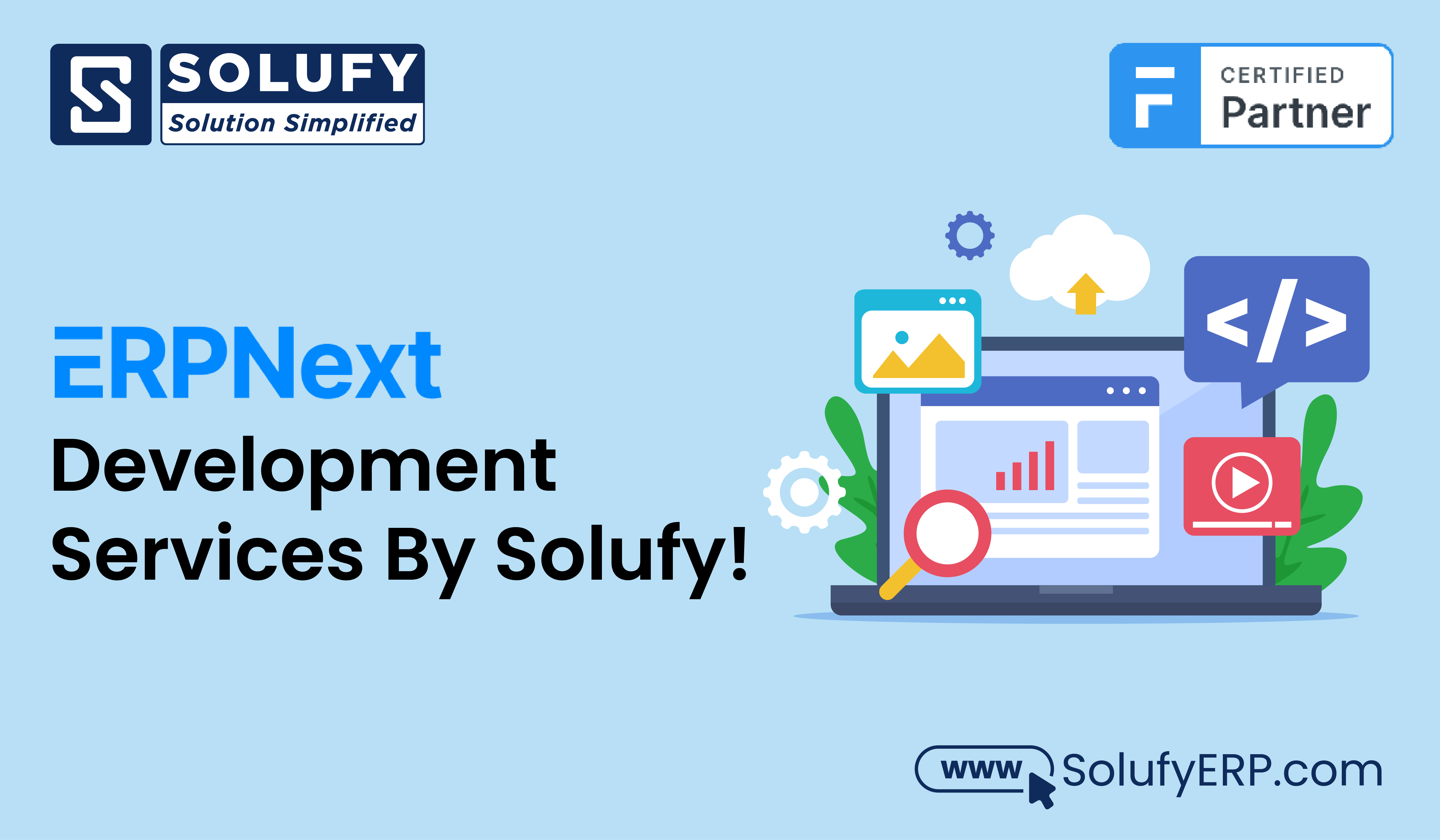ERP systems have developed into practical tools that facilitate decision-making, increase production, and cut down on processes. Known for flexibility, scalability, and a multitude of customisation options, ERPNext is an open-source program and one of the leading competitors in this sector. We’ll look at ERPNext development in this blog and how it might change businesses in many sectors.
What is ERPNext
ERPNext is a great way for a company to organise and keep track of ALL of its departments’ work. Small and medium-sized businesses can use this web-based method. Accounting, managing projects and tasks, sales, buying, inventory, CRM, administration, managing human resources, manufacturing, and running a website are all things that it can help with. This method works best for companies that make, sell, or ship things.
Key Features and Benefits of ERPNext
Scalable Structure
ERPNext’s modular design allows firms to choose and use only the capabilities they need. Through a focused approach to system design and operation, this configuration minimises complexity and maximises performance.
Customisation Operations
ERPNext’s ability to adapt to certain company practices is one of its strongest points. With the system’s wide range of customisation possibilities, businesses may adapt workflows, dashboards, reports, and user interfaces to their requirements.
Data Centralisation and Integration
ERPNext Development Company ensures data accuracy and integrity by combining data from many departments into a single, uniform platform. This consolidation facilitates real-time access to critical corporate information, fosters cooperation, and eliminates obstacles to data.
Workflow Automation
ERPNext app development eliminates human labour and reduces error-proneness by automating repetitive activities. Streamlining workflows and procedures helps organisations maximise their resources, increase output, and improve overall efficiency.
Analytics and Reporting
ERPNext provides reliable reporting and analytics functionalities that enable enterprises to derive meaningful conclusions from their data. Interactive dashboards, live analytics, and customizable reports support data-driven decision-making and foster expansion and competition.
ERPNext Development Process
Requirement Gathering
The first step in the development process is to fully comprehend the objectives and demands of your firm. This includes examining present procedures, identifying problem areas, and establishing precise objectives for ERPNext.
Program Configuration
ERPNext gives you a lot of choices to customise the system to work with the way your organisation operates. Modules, processes, data structures, and user interfaces are now tailored to your particular requirements.
Data Migration and Integration
ERPNext strengthens your company ecosystem by integrating with a variety of third-party applications, including payment gateways, e-commerce platforms, and CRM. Additionally, data transfer guarantees a smooth transition from outdated systems to ERPNext, protecting all of your historical data and guaranteeing uninterrupted operations.
Training and Testing
It is critical that you extensively test the system have been developed to find and address any problems or errors. Conducting proper training sessions ensures that your staff is fully capable of using ERPNext.
Continuous Assistance and Maintenance
Creating ERPNext is a never-ending task that requires ongoing assistance and upkeep. Frequent updates, bug fixes, and system enhancements ensure that the system adapts to your business’s growth and changes.
How can ERPNext Development Services Affect ROI?
ERPNext development services have a big effect on a business’s return on investment. ERPNext makes corporate objectives easier to attain by streamlining business operations, enhancing visibility and control, and allowing flexibility.
Imagine a small manufacturing company that experienced order delays and lost revenue due to issues with production schedules and inventory management.
The company resorted to ERPNext to handle these issues. The business saw notable operational benefits as a consequence. They completed orders more quickly, improving client satisfaction and encouraging repeat business.
In this instance, ERPNext development services played a key role in increasing the manufacturing firm’s return on investment. The company’s objectives were more effectively met by solving its unique issues and optimising operations. This, in turn, raised revenue, decreased expenses, and increased profits—all of which improved return on investment.
What are the Steps You Must Know Before Implementing ERPNext
Evaluating your company’s requirements
Companies should determine their actual needs before using ERP Development Service Provider Company. This involves deciding which operational components need assistance, what particular features and functionalities are required, and the degree of necessary modification.
Planning the execution
Making plans to implement ERPNext is the next step after determining what your business requires. This includes deciding precisely what your project will cover and assembling a project team to oversee the procedure.
Tailoring ERPNext to your company’s needs
Once you’ve decided how to implement ERPNext, the next stage is to customise it to meet your unique company requirements. This involves configuring ERPNext to precisely meet your needs and integrating it with other programs and technologies that you use.
Employee training on ERPNext usage
After getting ERPNext Custom Software development for your company, it’s essential to provide your personnel with the necessary training to operate it efficiently. This involves offering extensive training to guarantee that your employees can maximise ERPNext. Training packages customised to meet your unique company requirements may be arranged with ERPNext development service providers.
Continuous support and maintenance
To make sure your ERPNext system continues to function properly, ERP development service providers also provide ongoing support and maintenance. They can help you fix any issues that may arise and provide frequent updates and upgrades to keep your system up to date with the newest features and functionalities.

